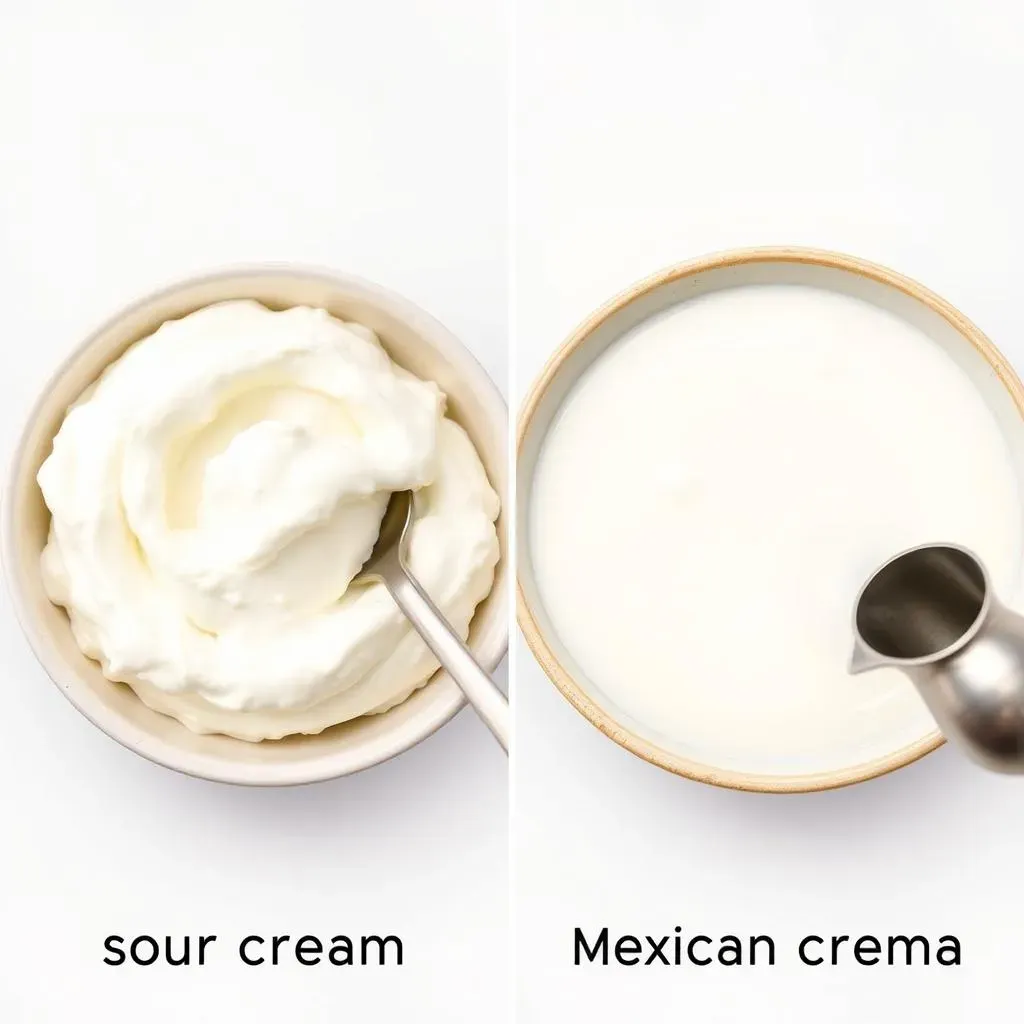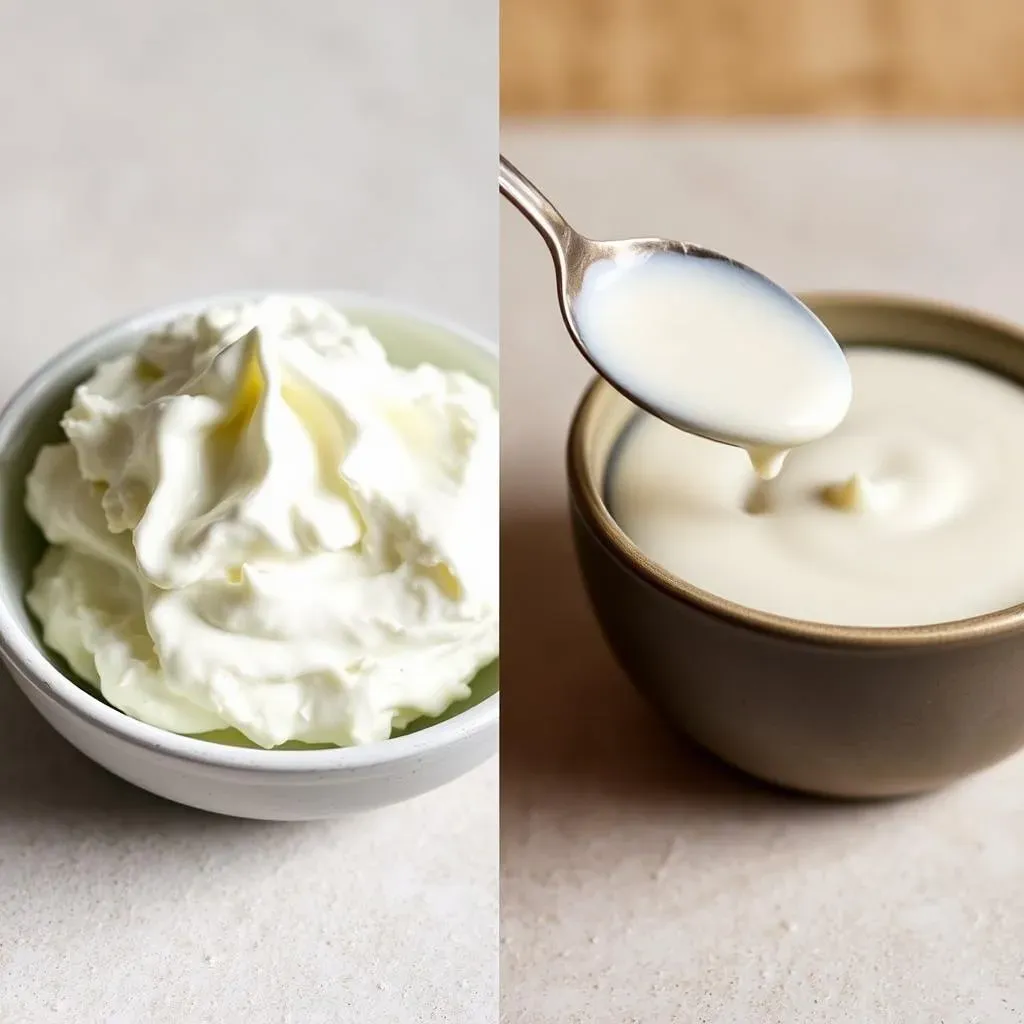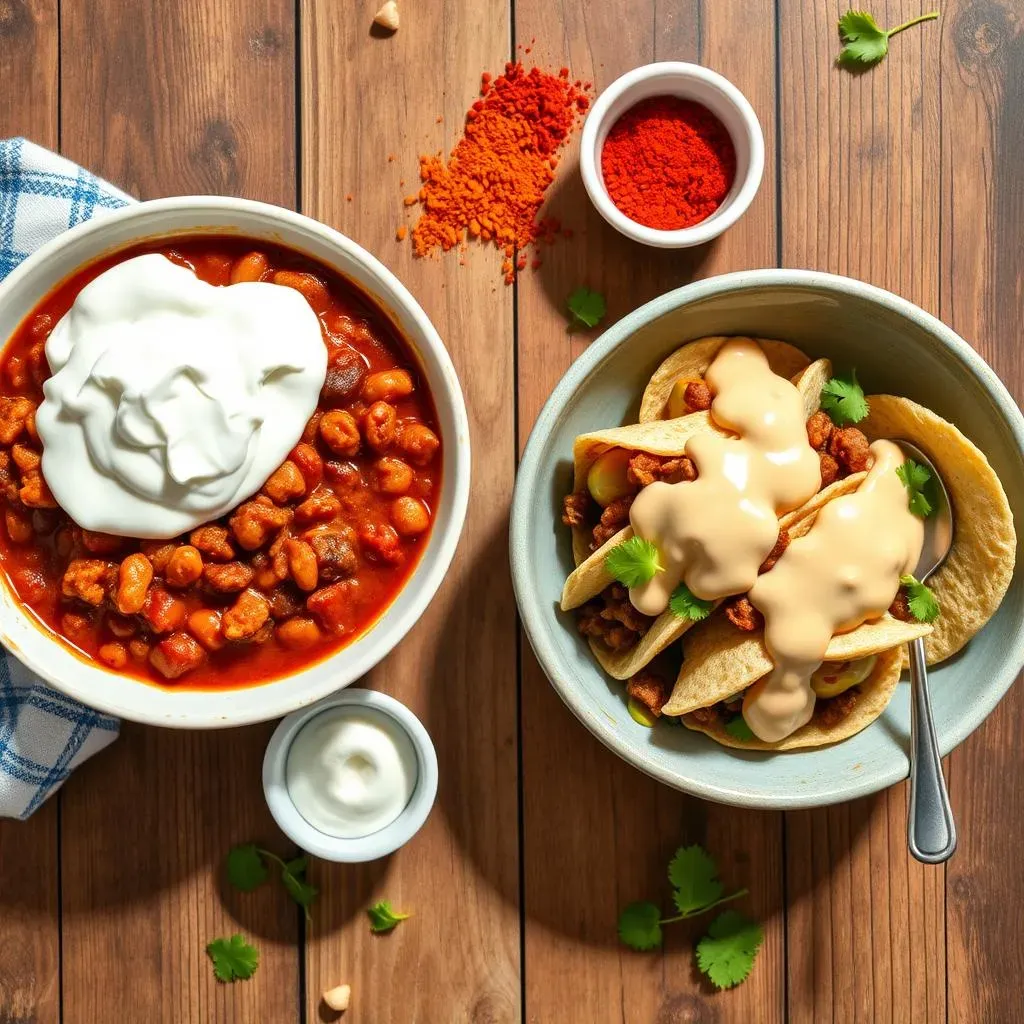Table of Contents
Ever stood in the dairy aisle, staring at the tubs of creamy goodness, wondering what the heck is the difference between Mexican sour cream vs regular? You're not alone! These two dairy delights might look similar, but they bring totally different vibes to the party. One's tangy and thick, the other's smooth and slightly sweet. This isn't just about choosing a topping; it’s about understanding the heart of Mexican cuisine and how these creams play vital roles. We're going to break down the basics of each, explore their unique flavors and textures, and then get into the nitty-gritty of when to use which in your cooking adventures. Think of it as your personal guide to navigating the world of creamy condiments. So, ditch the confusion and let's get to the bottom of this Mexican sour cream vs regular mystery!
The Basics: Sour Cream vs. Mexican Crema

The Basics: Sour Cream vs. Mexican Crema
What Exactly is Sour Cream?
let's start with the familiar: sour cream. It's what you probably already have chilling in your fridge. It’s made by taking regular cream and adding lactic acid bacteria. These little guys ferment the cream and that's what gives it that signature tangy flavor and thick, almost spoonable consistency. It's like a dairy science experiment that tastes awesome. Think of it as the slightly grumpy, but reliable friend in the dairy world – always there, always tangy.
It’s important to note that the type of bacteria and the length of fermentation can affect the tang and thickness. This is why some brands of sour cream might be tangier than others. But the basic principle remains the same: it's fermented cream.
Mexican Crema: A Different Kind of Cream
Now, let's talk about crema, or Mexican crema as it's often called. This stuff is a bit more laid-back than its sour cousin. While it shares some similarities, it's a totally different animal. Instead of just cream, it’s typically made with a blend of heavy cream and buttermilk. The fermentation process is also different, resulting in a thinner, more pourable consistency and a flavor that's tangy, yes, but also has a subtle sweetness that sour cream lacks. It’s the cool, smooth cousin that shows up to the party with a laid-back vibe.
Think of it as the difference between a dense, chewy cookie and a light, airy cake. Both are great, but they offer distinct experiences. The key difference here is that buttermilk contributes to the thinner texture and adds a little extra dimension to the flavor profile.
Feature | Sour Cream | Mexican Crema |
|---|---|---|
Main Ingredient | Cream | Heavy Cream & Buttermilk |
Flavor | Tangy, Acidic | Tangy, Slightly Sweet |
Texture | Thick, Spoonable | Thin, Pourable |
How the Fermentation Process Makes a Difference
The real magic behind both sour cream and crema is fermentation. The type of bacteria used and the fermentation time are what create the unique profiles. With sour cream, the bacteria produce a lot of lactic acid, which is responsible for the sharp, tangy flavor. It’s a simple process, but it creates a whole new product. Crema’s fermentation, on the other hand, is more subtle. The buttermilk adds a different set of cultures to the mix, leading to a lighter, tangier, and slightly sweeter end product.
It's like the difference between brewing a cup of black coffee and a latte. Both start with the same base, but the extra ingredients and preparation methods result in a totally different experience. It’s all about those tiny microbes and what they do!
Flavor and Texture Showdown: Mexican Sour Cream vs. Regular

Flavor and Texture Showdown: Mexican Sour Cream vs. Regular
The Tang Factor: A Flavor Comparison
let's talk taste. Sour cream, as the name suggests, is all about that tang. It's got a pronounced acidity that can make your taste buds tingle. It's that sharp, almost lemony note that cuts through rich, savory dishes. It's like a burst of sunshine on a cloudy day, but in dairy form. If you're looking for a cream that brings a noticeable zing, sour cream is your go-to. It's assertive, it's bold, and it doesn't hold back.
On the flip side, Mexican crema is more subtle. It has a tang, yes, but it's much milder and balanced by a slight sweetness. It's not as sharp as sour cream, making it more of a smooth operator. It's the kind of flavor that complements without overpowering. Think of it like the difference between a loud guitar solo and a gentle acoustic riff; both are great but create different moods. The sweetness in crema adds a layer of complexity that sour cream just doesn't have.
Texture Talk: Thickness vs. Pourability
Now, let's get tactile. Sour cream is thick, dense, and spoonable. It's the kind of cream that sits on top of your food like a fluffy cloud. You can dollop it, swirl it, and it'll mostly stay put. It's got a richness that feels substantial in your mouth. Think of it like a thick, velvety blanket – comforting and substantial.
Crema, on the other hand, is thinner and more pourable. It's got a smooth, almost liquid consistency that makes it perfect for drizzling. It's the kind of cream that gracefully cascades over your food, creating a beautiful finish. It's like a silky ribbon – elegant and fluid. The difference in texture significantly impacts how these creams behave in dishes. Sour cream tends to stay put, while crema flows and blends more easily.
Feature | Sour Cream | Mexican Crema |
|---|---|---|
Flavor Profile | Sharp, Tangy, Acidic | Milder Tang, Slightly Sweet |
Texture | Thick, Spoonable, Dense | Thin, Pourable, Fluid |
How Flavor and Texture Affect the Experience
The interplay between flavor and texture is key to understanding how these creams work in food. Sour cream's sharp tang and thick consistency make it a great counterpoint to rich, savory dishes. It cuts through the fat and adds a refreshing zing. It's the perfect foil for things like chili, baked potatoes, and hearty tacos. Crema's milder flavor and thinner texture, on the other hand, make it ideal for drizzling over dishes where you want a smooth, creamy finish without overpowering the other flavors. It blends into sauces beautifully, adding a touch of richness and a subtle tang.
It's like choosing the right paint for a canvas: sour cream is like a bold stroke of color, while crema is like a soft wash that blends seamlessly. Both are essential, but they create different effects. Think about the overall experience you want to create when choosing between these two creams.
Culinary Uses: When to Choose Mexican Crema or Regular Sour Cream

Culinary Uses: When to Choose Mexican Crema or Regular Sour Cream
so we've got the flavor and texture down, but when do you actually reach for one over the other? It's like picking the right tool for the job. Sour cream is your go-to when you want a bold, tangy kick. Think loaded baked potatoes, chili, or even a dollop on top of a spicy soup. It's fantastic for cutting through richness and adding a refreshing contrast. It's also great in dips, where its thickness helps it hold its shape. It's that reliable workhorse that always delivers a punch of flavor. If a recipe calls for a creamy element but also needs that zing, sour cream is your pal.
Now, Mexican crema is a bit more of a finesse player. It shines when you want a smooth, creamy finish without overpowering the other flavors. It's perfect for drizzling over tacos, enchiladas, and grilled corn. It blends beautifully into sauces, adding richness and a subtle tang. I love using it in my quesadillas to add that extra touch. It's also amazing in desserts where the mild tang and sweetness adds a nice twist. It's the secret ingredient that elevates a dish from good to great. Think of it as the elegant finishing touch, the final brushstroke on a masterpiece. It's all about the subtlety it brings.
Dish Type | Sour Cream | Mexican Crema |
|---|---|---|
Hearty Dishes (Chili, Baked Potatoes) | Ideal for tangy contrast | Not the best, too mild |
Tacos, Enchiladas | but can be too strong | Perfect for drizzling, subtle flavor |
Dips | Great for thick, tangy dips | Can be used, but thinner consistency |
Sauces | Can be used, but may be too strong | Blends well, adds smooth richness |
Desserts | Can be used, but may be too tangy | Adds slight tang and sweetness |
Let's get real for a second. It's not like there are hard and fast rules. Sometimes, you might want a dollop of sour cream on your tacos and you know what? That's perfectly fine. But understanding the differences between these two creams helps you make more informed decisions in the kitchen. It’s about knowing what flavor and texture will enhance your dish. I think of it as having a deeper understanding of the ingredients in my pantry. It’s not just about following a recipe. It’s about creating a symphony of flavors.
And, honestly, experimenting is the name of the game. Try using crema in a dip sometime and see how the thinner consistency works. Try using sour cream on a taco and see if you like that extra tang. Don't be afraid to go off script. After all, cooking should be fun, and a little bit of experimentation can lead to some amazing discoveries. It’s all part of the delicious journey of cooking. So, go ahead, grab both and start playing around with flavors!
The Cream of the Crop: Wrapping Up Mexican Crema vs. Regular Sour Cream
So, there you have it: the lowdown on Mexican crema and regular sour cream. They're both fantastic, but they're not interchangeable. Sour cream brings that sharp tang and sturdy texture, perfect for dolloping on chili or baked potatoes. Crema, with its gentle sweetness and pourable consistency, is the drizzle champion for tacos and elote. Knowing their differences isn't just about being a kitchen whiz; it's about respecting the nuances of Mexican flavors. Now, armed with this knowledge, go forth and create some deliciousness, confidently choosing the right cream for the right dish. Whether you're team tangy or team sweet, the important thing is you're cooking with flavor and understanding.